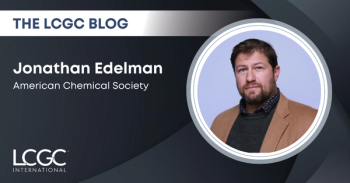Key Points
A review conducted by the Food Science Departments of Cairo University, the University of Basrah, and Damascus University highlights both conventional and advanced methods used to efficiently extract and purify bioactive compounds from plant-based sources while preserving their structure and bioactivity.
Plant-derived bioactive compounds like polyphenols, flavonoids, and carotenoids offer various health benefits (antioxidant, anti-inflammatory, anticancer, antimicrobial), driving increased research and interest from food, pharmaceutical, and cosmetic industries.
Sophisticated chromatography techniques are crucial for precise identification and characterization. Despite technological progress, challenges remain in fully realizing and standardizing bioactive compound extraction and application
A recent review conducted by the Food Science Departments of Cairo University (Giza, Egypt), the University of Basrah (Basrah, Iraq) and Damascus University (Damascus, Syria)and published in Food Science & Nutrition (1) explored a variety of methodologies and technologies used in the extraction and isolation of bioactive compounds while investigating chemical structures, characteristics, and possible implications for human health. The extraction of these compounds uses both conventional methods (such as solvent extraction) and modern techniques (including supercritical fluid extraction, ultrasound-assisted extraction, and microwave-assisted extraction), all intended to efficiently recover bioactive compounds while maintaining structural integrity and bioactivity. Isolation processes, such as chromatography high pressure liquid chromatography (HPLC) and gas chromatography (GC), centrifugation, and filtration, are employed to separate and purify these compounds from complex plant matrices. Advanced analytical methods, including mass spectrometry (MS), nuclear magnetic resonance (NMR), and infrared spectroscopy (IR), are used for the identification and structural elucidation of these bioactive compounds, providing detailed insights into their chemical makeup and properties.
Bioactive compounds are inherent substances with potential health benefits; plant-derived food contains many of these, including polyphenols, carotenoids, flavonoids, and alkaloids, all of which demonstrating a wide range of characteristics, encompassing antioxidant activities (2), anti-inflammatory (3), anticancer (4), and antimicrobial effects (5). The expanding identification of advantages linked to bioactive compounds has influenced a noteworthy increase in research concentrating on the aforementioned techniques. In addition, other sectors, such as the food, pharmaceutical, and cosmetics industries, have shown significant enthusiasm in the investigation of possible uses of these compounds (6). Recently, important progress has been observed in these sectors concerning bioactive substances, much of which attributed to the emergence of advanced methodologies and technologies employed in their extraction, isolation, and characterization (7), resulting in a more profound comprehension of the chemical compositions, properties, and prospective physiological advantages of these substances, and thereby facilitating their utilization across diverse spheres. However, regardless of the significant progress, there remains continued challenges involved with bioactive compounds and their extraction, isolation, and identification procedures obtained from plant-based dietary sources (8).
Among the isolation, purification, and identification techniques of bioactive compounds from plant-based foods discussed in this article are:
Centrifugal partition chromatography(CPC), a sophisticated chromatographic technique that has garnered significant interest in natural product research for extracting, isolating, and purifying bioactive compounds from plant-based sources. CPC offers several advantages over traditional chromatographic methods, making it a valuable tool for discovering novel bioactive compounds (9). The technique operates on the principle of liquid–liquid partitioning and uses a two-phase solvent system. In CPC, the sample mixture is introduced into a column filled with a stationary phase, typically a high-density liquid, while a low-density liquid serves as the mobile phase. Centrifugal force drives the formation of a biphasic system, enabling the partitioning and separation of target compounds based on their partition coefficients (10).
Preparative liquid chromatography (PLC), a powerful technique used for the purification and isolation of bioactive compounds from plant-based sources. A scaled-up version of analytical liquid chromatography, specifically designed to handle larger sample volumes and produce purified fractions suitable for further analysis and applications (11), PLC operates on the same principles as analytical liquid chromatography, involving the separation of compounds based on their differential interactions with a stationary phase and a mobile phase. However, PLC utilizes larger columns packed with specialized stationary phases to accommodate higher sample loads and achieve higher purification yields (12).
High-resolution mass spectrometry (HRMS), an advanced analytical technique that many believe revolutionized the field of compound identification and characterization (13). Combining the use of high-resolution mass analyzers with sophisticated data acquisition and processing techniques, enabling precise determination of molecular weights and accurate mass spectra, HRMS has become an indispensable tool in various scientific disciplines, including chemistry, biochemistry, pharmaceuticals, and environmental analysis (14).
The extraction, isolation, identification, and characterization of bioactive compounds from plant-based foods are very important in the leveraging of their potential across various applications, the reviewers wrote. Advanced extraction, isolation, and purification techniques, including chromatography, enable the acquisition of pure, high-potency bioactive compounds to gauge the potential of these compounds in the addressing of health, environmental, and economic challenges across various industries (1).
References
1. Abedelmaksoud, T. G.; Younis, M. I.; Altemimi, A. B. et al. Bioactive Compounds of Plant-Based Food: Extraction, Isolation, Identification, Characteristics, and Emerging Applications. Food Sci Nutr. 2025, 13 (6), e70351. DOI: 10.1002/fsn3.70351
2. Thuphairo, K.; Sornchan, P.; Suttisansanee, U. Bioactive Compounds, Antioxidant Activity and Inhibition of Key Enzymes Relevant to Alzheimer's Disease from Sweet Pepper (Capsicum annuum) Extracts. Prev. Nutr. Food Sci. 2019, 24 (3), 327-337. DOI: 10.3746/pnf.2019.24.3.327
3. Villarreal-Soto, S. A.; Beaufort, S.; Bouajila, J. et al. Impact of Fermentation Conditions on the Production of Bioactive Compounds With Anticancer, Anti-Inflammatory and Antioxidant Properties in Kombucha Tea Extracts. Process Biochem. 2019, 83, 44–54. DOI: 10.1016/j.procbio.2019.05.004.
4. Wu, M. S.; Aquino, L. B. B.; Barbaza, M. Y. U. et al. Anti-Inflammatory and Anticancer Properties of Bioactive Compounds from Sesamum indicum L.-A Review. Molecules 2019, 24 (24), 4426. DOI: 10.3390/molecules24244426
5. Gosset-Erard, C.; Zhao, M.; Lordel-Madeleine, S. et al. Identification of Punicalagin as the Bioactive Compound Behind the Antimicrobial Activity of Pomegranate (Punica granatum L.) Peels. Food Chem. 2021, 352, 129396. DOI: 10.1016/j.foodchem.2021.12939
6. Shang, A.; Cao, S. Y.; Xu, X. Y. et al. Bioactive Compounds and Biological Functions of Garlic (Allium sativum L.). Foods 2019, 8 (7), 246. DOI: 10.3390/foods8070246
7. Essien, S. O.; Young, B.; Baroutian, S. Recent Advances in Subcritical Water and Supercritical Carbon Dioxide Extraction of Bioactive Compounds from Plant Materials. Trends Food Sci.Technol. 2020, 97, 156-169. DOI: 10.1016/j.tifs.2020.01.014
8. Mahato, N.; Sinha, M.; Sharma, K. et al. Modern Extraction and Purification Techniques for Obtaining High Purity Food-Grade Bioactive Compounds and Value-Added Co-Products from Citrus Wastes. Foods 2019, 8 (11), 523. DOI: 10.3390/foods8110523
9. Métoyer, B.; Renouf, E.; Jourdes, M. et al. Isolation of Hydrolyzable Tannins from Castanea sativa Using Centrifugal Partition Chromatography. J. Nat. Prod. 2024, 87 (4), 652-663. DOI: 10.1021/acs.jnatprod.3c00524
10. Kiene, M.; Blum, S.; Jerz, G. et al. Comparison between High-Performance Countercurrent Chromatography and Fast-Centrifugal Partition Chromatography for a One-Step Isolation of Flavonoids from Peanut Hulls Supported by a Conductor like Screening Model for Real Solvents. Molecules 2023, 28 (13), 5111. DOI: 10.3390/molecules28135111
11. Shao, Q.; Hu, W.; Liu, X. et al.(2020). Separation of Five Bioactive Compounds from Glycyrrhiza uralensis Fisch Using a General Three-Liquid-Phase Flotation Followed by Preparative High-Performance Liquid Chromatography. Sep. Sci. Tech. 2020, 55 (16), 2977-2986. DOI: 10.1080/01496395.2019.1655456
12. Li, Z.; Dai, Z.; Jiang, D. et al. Bioactivity-Guided Separation of Antifungal Compounds by Preparative High-Performance Liquid Chromatography. J. Sep. Sci. 2021, 44 (12), 2382-2390. DOI: 10.1002/jssc.202100072
13. Razgonova, M.; Boyko, A.; Zinchenko, Y. et al. Actinidia deliciosa: A High-Resolution Mass Spectrometric Approach for the Comprehensive Characterization of Bioactive Compounds. Turk. J. Agric. For. 2023, 47 (2), 155-169. DOI: 10.55730/1300-011X.3074
14. Alshammari, F.; Alam, M. B.; Naznin, M., Kim, S. et al. Optimization of Portulaca oleracea L. Extract Using Response Surface Methodology and Artificial Neural Network and Characterization of Bioactive Compound by High-Resolution Mass Spectroscopy. Arab. J. Chem. 2023, 16 (2), 104425. DOI: 10.1016/j.arabjc.2022.104425





